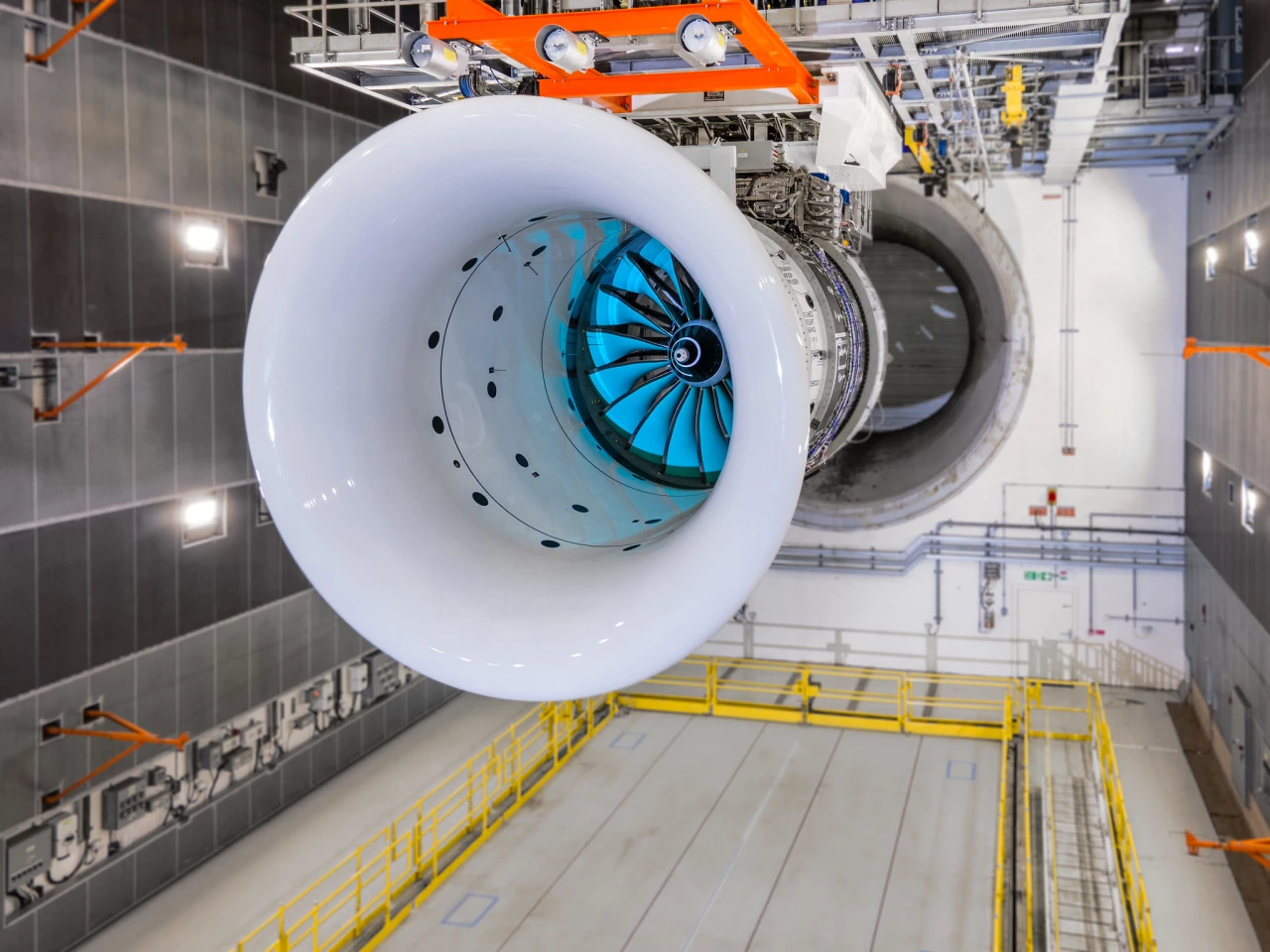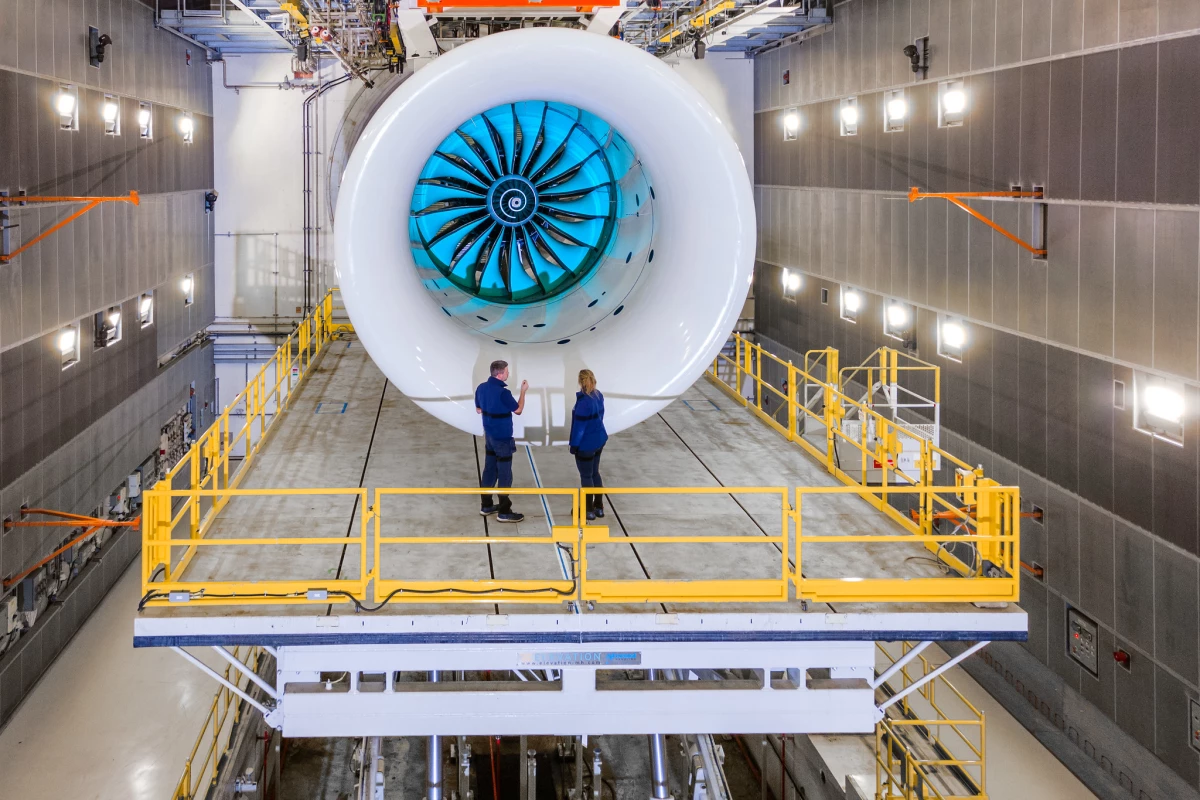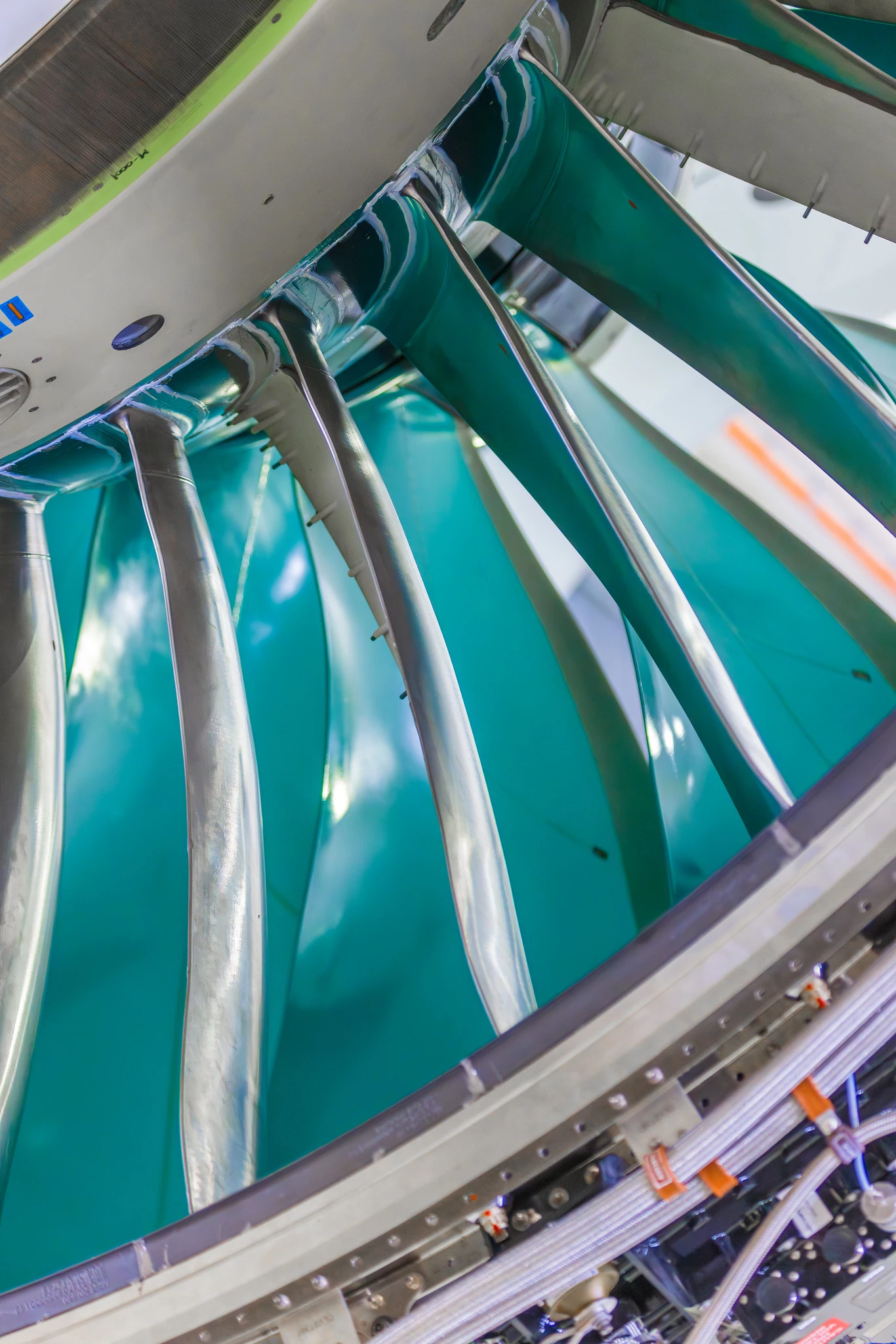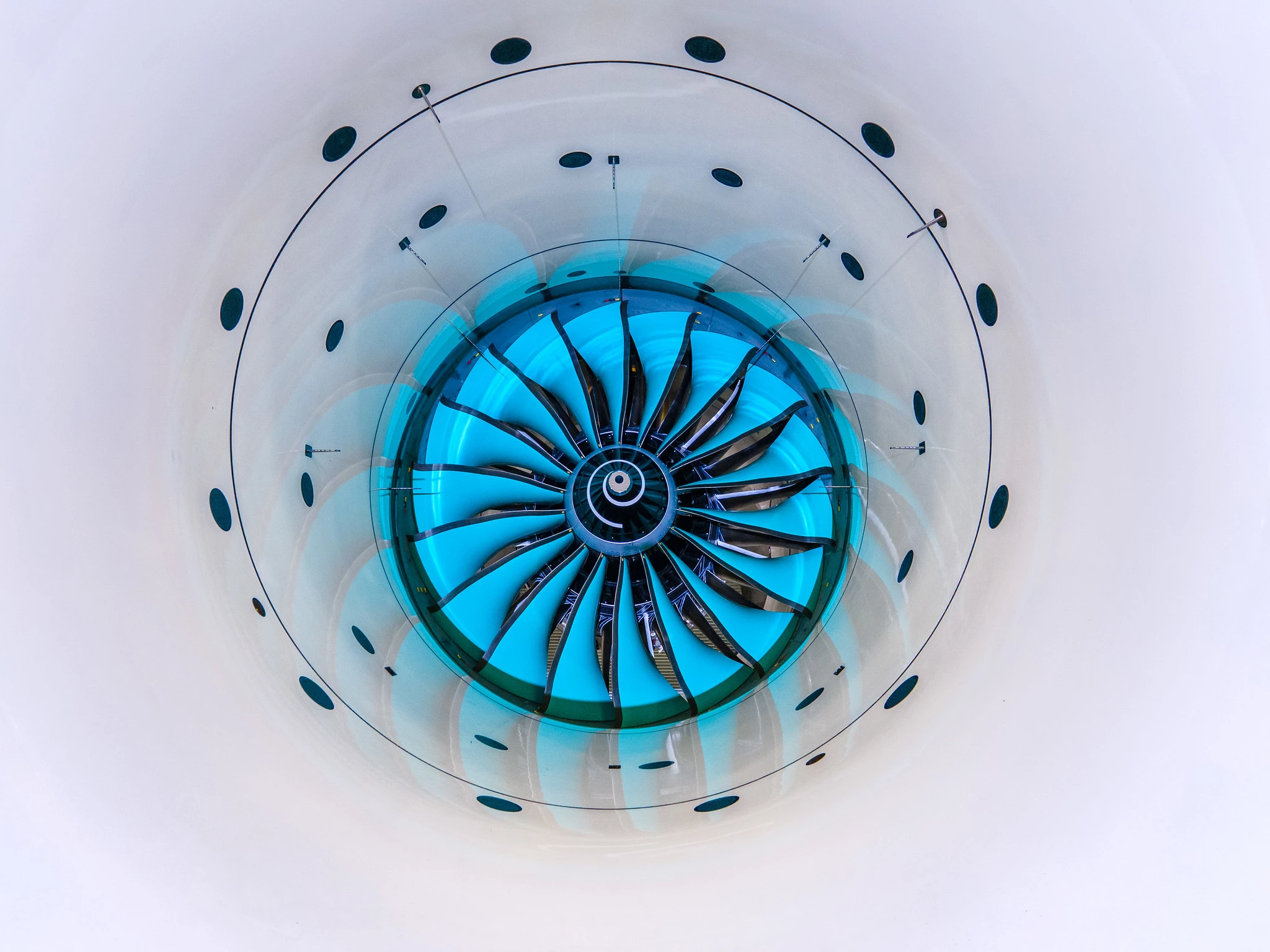Rolls-Royce has taken a major green step, announcing that not only has its giant UltraFan demo jet engine been run at full power on 100% Sustainable Aviation Fuel (SAF), but tests have proven all its current civilian engines are compatible with 100% SAF.
With increasing pressure on the aerospace industry to produce technology that's both more efficient and environmentally friendly, it's significant when a major player like Rolls-Royce embraces something like SAF across an entire product range, including its show piece for this decade.
Billed as the largest and most powerful jet engine in the world, the UltraFan has a 140-in (356-cm) fan and can produce 64 MW of power. In static tests, it has generated a maximum thrust of over 85,000 lb and the technology can be scaled to as high as 110,000 lb for narrow-body or wide-body aircraft of the 2030s.
But the UltraFan's party piece is its geared turbofan with a variable pitch fan system. This allows the engine's turbine and fan to each run at its optimum speed and the carbon composite fan blades can vary their pitch to optimize each phase of flight. The use of composites means that the engine is lighter than an equivalent using titanium alloy and it is 10% more efficient than the previous Trent XWB.

According to Rolls-Royce, some of the technologies developed for the UltraFan can be incorporated into the company's other current engines, but one thing they share in common is that they have all been certified as compatible with running solely on SAF. The latest to be certified is the BR710 business jet engine, which was tested at the company’s facility in Canada. Other engines include the Trent 700, Trent 800, Trent 900, Trent 1000, Trent XWB-84, Trent XWB-97, Trent 7000, BR725, Pearl 700, Pearl 15, and Pearl 10X.
A Virgin Atlantic Boeing 787 Dreamliner with Trent 1000 engines is scheduled to make the world's first transatlantic flight fueled entirely by SAF. Currently, international standards only allow a maximum of 50% SAF to be blended with 50% conventional jet fuel. It's hoped that such test flights and static demonstrations the technical hurdles have been overcome could change this.
"We estimate that to reach Net Zero flying by 2050, a combination of highly-efficient, latest-generation gas turbines such as UltraFan operating on 100% SAF are likely to contribute around 80% of the total solution, which is why today’s announcement is such an important milestone for Rolls-Royce and the wider industry," said Simon Burr, Group Director of Engineering, Technology and Safety, Rolls-Royce plc.
Source: Rolls-Royce









